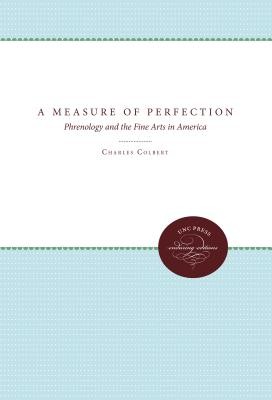
- We will send in 10–14 business days.
- Author: Charles Colbert
- Publisher: University of North Carolina Press
- ISBN-10: 0807846732
- ISBN-13: 9780807846735
- Format: 17.2 x 25.5 x 3.4 cm, softcover
- Language: English
- SAVE -10% with code: EXTRA
Reviews
Description
Despite its widespread popularity in antebellum America, phrenology has rarely been taken seriously as a cultural phenomenon. Charles Colbert seeks to redress this neglect by demonstrating the important contributions the theory made to artistic developments in the period. He goes on to reveal the links between the tenets of phrenology and the cultural ideals of Jacksonian democracy. As Colbert demonstrates, virtually every important figure of the American Renaissance expressed some opinion of phrenology, whether or not they embraced it. Its proponents included many artists eager to support a cause that enhanced the status of their profession by endowing the human form with extraordinary significance. Colbert reviews the careers of Hiram Powers, William Sidney Mount, Harriet Hosmer, Asher B. Durand, and Thomas Cole, among others, in light of their responses to phrenology. Powers's Greek Slave, for example, can be seen as a model of the physical and moral perfection available to those who adopted the phrenological program, a series of dictates on everything from diet to mental and physical exercise. By creating portraits, genre scenes, ideal figures, and even landscapes that embodied the theory's teachings, Colbert shows, artists endeavored to enlist their audience in a crusade that would transform the nation.
Originally published in 1997.
A UNC Press Enduring Edition -- UNC Press Enduring Editions use the latest in digital technology to make available again books from our distinguished backlist that were previously out of print. These editions are published unaltered from the original, and are presented in affordable paperback formats, bringing readers both historical and cultural value.
EXTRA 10 % discount with code: EXTRA
The promotion ends in 16d.04:50:03
The discount code is valid when purchasing from 10 €. Discounts do not stack.
- Author: Charles Colbert
- Publisher: University of North Carolina Press
- ISBN-10: 0807846732
- ISBN-13: 9780807846735
- Format: 17.2 x 25.5 x 3.4 cm, softcover
- Language: English English
Despite its widespread popularity in antebellum America, phrenology has rarely been taken seriously as a cultural phenomenon. Charles Colbert seeks to redress this neglect by demonstrating the important contributions the theory made to artistic developments in the period. He goes on to reveal the links between the tenets of phrenology and the cultural ideals of Jacksonian democracy. As Colbert demonstrates, virtually every important figure of the American Renaissance expressed some opinion of phrenology, whether or not they embraced it. Its proponents included many artists eager to support a cause that enhanced the status of their profession by endowing the human form with extraordinary significance. Colbert reviews the careers of Hiram Powers, William Sidney Mount, Harriet Hosmer, Asher B. Durand, and Thomas Cole, among others, in light of their responses to phrenology. Powers's Greek Slave, for example, can be seen as a model of the physical and moral perfection available to those who adopted the phrenological program, a series of dictates on everything from diet to mental and physical exercise. By creating portraits, genre scenes, ideal figures, and even landscapes that embodied the theory's teachings, Colbert shows, artists endeavored to enlist their audience in a crusade that would transform the nation.
Originally published in 1997.
A UNC Press Enduring Edition -- UNC Press Enduring Editions use the latest in digital technology to make available again books from our distinguished backlist that were previously out of print. These editions are published unaltered from the original, and are presented in affordable paperback formats, bringing readers both historical and cultural value.


Reviews